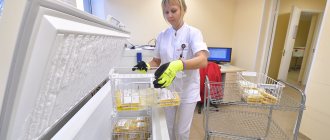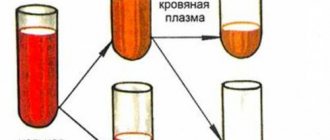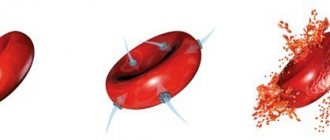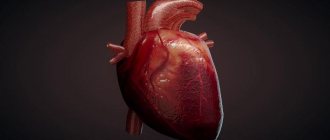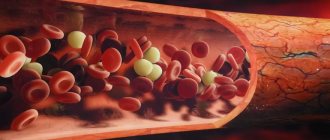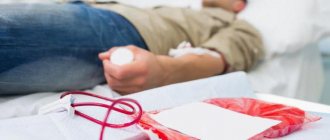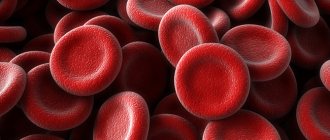Muscovites who have recovered from coronavirus infection can become blood plasma donors. The transfusion procedure allows us to help those who suffer COVID-19 especially hard. According to experts from the clinical committee of the Moscow Department of Health, COVREC blood plasma transfusion (with antibodies to coronavirus infection) is one of the potentially effective methods of treating the disease. , about a thousand people have already become plasma donors to treat patients with COVID-19 .
About how the process of donating biomaterial goes, what features and contraindications there are, see the mos.ru material.
Plasma transfusion
The plasmapheresis procedure can be performed by two main methods: discrete and hardware. As a result, doctors can prepare several types of plasma for subsequent transfusion:
- Native plasma
, which is isolated from donor canned blood. Thus, from 500 ml of preserved blood, 250–300 ml of native plasma are obtained. - Plasma obtained by automatic plasmapheresis
using a special installation.
For transfusion, fresh frozen plasma of the same blood group is used. Initially, doctors adhere to a dosage of 10–20 ml/kg. The decision on subsequent transfusions is made based on the patient’s clinical condition and the results of blood coagulation studies. However, do not underestimate the importance of blood plasma.
Plasma transfusion - indications and contraindications
Like any medical procedure, plasma transfusion has its indications and contraindications. Doctors always take them into account before prescribing a transfusion of hemostatic solutions. Among the situations when a blood plasma transfusion may be required, the indications include the following:
- Replenishment of the volume of plasma hemostasis factors in DIC complicated by the development of shock.
- Replenishing the volume of plasma hemostasis factors in acute massive blood loss.
- Reduced synthesis of plasma coagulation factors caused by liver diseases.
- Overdose of direct anticoagulants.
- Plasmapheresis for thrombocytopenic purpura, severe poisoning, sepsis.
- Coagulopathy caused by a deficiency of plasma physiological anticoagulants.
Plasmapheresis is not recommended:
- as a replenishment of blood volume;
- for parenteral nutrition;
- persons with a burdened transfusion history;
- with congestive heart failure.
Blood plasma transfusion - side effects
When prescribing such a procedure, doctors know the dangers of plasma transfusion, so they take appropriate measures to prevent complications. Among the common transfusion complications it is necessary to highlight:
- febrile non-hemolytic reactions;
- acute hemolytic reaction caused by AB0 incompatibility;
- overload of the circulatory system;
- allergic reactions;
- post-transfusion purpura;
- infections.
How to get plasma?
Plasma is obtained from the blood using centrifugation. The method allows you to separate plasma from cellular elements using a special apparatus without damaging them . The blood cells are returned to the donor.
The plasma donation procedure has a number of advantages over simple blood donation:
- The volume of blood loss is less, which means less harm is caused to health.
- Blood can be donated for plasma again after 2 weeks.
There are restrictions on plasma donation. Thus, a donor can donate plasma no more than 12 times per year.
Plasma donation takes no more than 40 minutes.
Plasma is the source of such important material as blood serum. Serum is the same plasma, but without fibrinogen, but with the same set of antibodies. They are the ones who fight pathogens of various diseases. Immunoglobulins contribute to the rapid development of passive immunity.
To obtain blood serum, sterile blood is placed in an incubator for 1 hour. Next, the resulting blood clot is peeled off the walls of the test tube and placed in the refrigerator for 24 hours. The resulting liquid is added to a sterile vessel using a Pasteur pipette.
Blood plasma: composition and functions
Blood plasma is a viscous, homogeneous liquid of light yellow color. It makes up about 55-60% of the total blood volume. It contains blood cells in the form of a suspension. Plasma is usually clear, but may be slightly cloudy after eating a fatty meal. Consists of water and mineral and organic elements dissolved in it.
Plasma composition and functions of its elements
Most of the plasma is water, its amount is approximately 92% of the total volume. In addition to water, it includes the following substances:
- proteins;
- glucose;
- amino acids;
- fat and fat-like substances;
- hormones;
- enzymes;
- minerals (chlorine, sodium ions).
About 8% of the volume is proteins, which are the main part of plasma. It contains several types of proteins, the main ones being:
- albumins – 4-5%;
- globulins – about 3%;
- fibrinogen (belongs to globulins) – about 0.4%.
Other proteins
In addition to the above, plasma also contains other proteins:
- complement (immune proteins);
- transferrin;
- thyroxine-binding globulin;
- prothrombin;
- C-reactive protein;
- haptoglobin.
You can also read: Total protein in the blood
Non-protein components
In addition, blood plasma includes non-protein substances:
- organic nitrogen-containing: amino acid nitrogen, urea nitrogen, low molecular weight peptides, creatine, creatinine, indican. Bilirubin;
- organic nitrogen-free: carbohydrates, lipids, glucose, lactate, cholesterol, ketones, pyruvic acid, minerals;
- inorganic: sodium, calcium, magnesium, potassium cations, chlorine anions, iodine.
The ions in the plasma regulate the pH balance and maintain the normal state of cells.
Functions of proteins
Proteins have several purposes:
- homeostasis;
- ensuring the stability of the immune system;
- maintaining the aggregate state of the blood;
- nutrient transfer;
- participation in the process of blood clotting.
Plasma functions
Blood plasma performs many functions, including:
- transportation of blood cells, nutrients, metabolic products;
- binding of liquid media located outside the circulatory system;
- making contact with body tissues through extravascular fluids, thereby achieving hemostasis.
Donor plasma saves many lives
Use of donor plasma
In our time, transfusions often require not whole blood, but its components and plasma. Therefore, blood transfusion centers often donate blood for plasma.
It is obtained from whole blood by centrifugation, that is, the liquid part is separated from the formed elements using a machine, after which the blood cells are returned to the donor. The procedure lasts about 40 minutes.
The difference from donating whole blood is that blood loss is much less, and you can donate plasma again after two weeks, but no more than 12 times during the year.
To obtain it, place sterile blood in a thermostat for an hour. Then the resulting clot is peeled off from the wall of the test tube and kept in the refrigerator for a day.
After this, using a Pasteur pipette, the settled whey is poured into a sterile container.
Conclusion
Blood plasma is its liquid component, which has a very complex composition. Plasma performs important functions in the body.
In addition, donor plasma is used for transfusion and preparation of therapeutic serum, which is used for the prevention and treatment of infections, as well as for diagnostic purposes to identify microorganisms obtained during analysis. It is considered more effective than vaccines.
Immunoglobulins contained in serum immediately neutralize harmful microorganisms and their metabolic products, and passive immunity is formed faster.
α-globulin fraction
The functional purpose of proteins in this fraction has a number of features. In this category, the smallest molecular size is retinol-binding protein (21 kDa). The largest molecules are characteristic of high-density lipoproteins (200-400 kDa), which is probably why they are responsible for cholesterol transport. The vast majority of proteins in this fraction have a stable molecular weight of about 40-70 kDa. Transcobalamin is responsible for the transport of B12.
Is it difficult to figure it out on your own?
Try asking your teachers for help
Solving problems Tests Essays
α1-globulin deserves special attention. Quite often it is called an acidic glycoprotein, and its composition contains 38% carbohydrates. In the blood, its content ranges from 0.2 g/l to 0.4 g/l. The acidity of the medium (pH), at which its molecule does not carry an electrical charge, is 1.0-2.7. In addition, α1-globulin can reduce the activity of proteolytic enzymes by transcortin. The story of α1-globulin does not end there. It contains α1-antitrypisin and α1-antichymotrypsin; they do not perform a transport function, but act as inhibitors of serine proteinases.
Heterogeneous α2-globulins are very important and necessary elements of plasma. They differ not only in molecular size. The functional characteristics of proteins are also varied. The protein responsible for binding vitamin D (52 kDa) has the most compact size. Plasma globulin ceruloplasmin (glycoprotein) exhibits high oxidase activity.
Harmful or useful
There are different, often directly opposite, opinions about whether donating blood plasma is harmful. Some are convinced that such an activity definitely harms our body and strongly advise against resorting to it. Others, on the contrary, believe that donating it brings benefits to the donor. Modern medical scientists have convincingly proven that such a procedure poses absolutely no threat to the health of the person donating plasma, being completely harmless. Moreover, after donating plasma, the work of protective functions and immunity is activated, so experienced doctors often prescribe plasma donation to patients as a medicinal and health-improving procedure.
Preparation and process
Plasma donation requires mandatory compliance with a number of rules and requirements. Anyone who wants to take it must know that there are strict restrictions and even prohibitions in this process. For example, plasma cannot be taken from a person if he is sick:
- AIDS;
- Syphilis;
- Hepatitis;
- Suffering from alcoholism or drug addiction, mental or other illnesses.
The center where blood transfusions are also not allowed to do this in case of problems with diabetes mellitus, abnormal blood pressure, or signs of severe myopia. Temporary restrictions apply to those who have recently undergone tooth extraction, surgery or vaccination, during the menstrual process, are homosexual, illegal migrants, etc. These and other norms have determined in practice a special algorithm for the admission procedure. First, a potential donor's blood must be taken for analysis to determine whether there are any viruses in it and how much hemoglobin it contains. The patient is required to honestly fill out the questionnaire, and only after that he can be admitted to the procedure. Before this, he should avoid taking:
- Salty, spicy and fatty foods;
- Any medications;
- Alcohol (at least a week before the test day).
After plasma collection, which can be either automatic or manual, the patient is usually required to stay in the blood collection center hospital for another two hours. Good health to you!
Quality control
Before inviting Russian citizens to donate plasma, specialists carefully find out their medical history.
“We check everyone who left requests in the call center using the EMIAS system, we find out that the person really got sick, that enough time has passed since recovery, that he has negative tests for COVID,” says Alexander Kostin.
Additional tests are taken from the donor on site, and testing of the biomaterial begins during the blood donation process.
“Immediately after the procurement procedure, the plasma undergoes a special treatment - photochemical inactivation of pathogens. We add certain substances to the plasma and expose it to ultraviolet light or visible light. This is a standardized technique that is designed to remove those potential pathogenic microorganisms for which we do not test the donor. In addition, testing for blood-borne infections (hepatitis B, C, HIV, syphilis) is mandatory. The results are usually ready the next day, and until this process is completed, the plasma is not used for patients,” explains the doctor.
Fibrinogen
Acts as a special protein. It is produced in the liver. The main task is to ensure normal blood clotting. The process takes place in several stages.
- As soon as the body needs to close a wound, a gap in the tissues, the synthesis of special substances-factors begins. These include fibrinogen.
- Once the amount of a substance reaches a certain value, it is subject to breakdown. A special compound called thrombin is involved.
- Fibrinogen is destroyed and breaks down into sticky components. The so-called threads.
- After the factor has precipitated, it adheres to the site of the lesion, platelets, ensuring normal coagulation. A blood clot forms and covers the wound surface. It then forms a hard scab.
The process occurs whenever a lesion is formed. If there is not enough fibrinogen, coagulopathies begin. Normal clotting is disrupted. The blood becomes too thin.
Amino acids
They act as a kind of building material for the cells of the body. They are also part of their walls, ensuring normal conductivity of the cytoplasmic membrane. And at the same time its strength and elasticity.
- Fats. Lipids, like amino acids, are the main building materials. The key one is cholesterol, which is well known to everyone.
- Glucose. Acts as a nutrient. Works as a special stock. Because during splitting a large amount of energy is released. As a rule, during the production of donor material, glucose is not removed; it remains in place.
- Hormones. Those that are produced in the patient's body. They act as a kind of mediators, substances that transmit signals to tissues and entire systems. This is their main task.
- Minerals. Iodine, iron, chlorine, dozens of other substances. Both in the form of a complete compound that does not enter into simple reactions, and in the form of charged ions. It is the latter that maintain normal blood acidity and participate in the functioning of cells and cytoplasmic membranes.
All substances perform two main functions. If we talk about the issue in general.
Which ones exactly:
- Ensuring proper metabolism.
- Maintaining a state of homeostasis. When the body is in balance, works correctly and is stable in relation to itself.
A deficiency or excess of any compound immediately results in disorders. In this case, treatment is required.
Composition and objectives of non-protein compounds in plasma
Plasma contains:
- Organic compounds based on nitrogen. Representatives: uric acid, bilirubin, creatine. An increase in the amount of nitrogen signals the development of azotomy. This condition occurs due to problems with the excretion of metabolic products in the urine or due to the active destruction of protein and the entry of large amounts of nitrogenous substances into the body. The latter case is typical for diabetes, fasting, and burns.
- Organic compounds that do not contain nitrogen. This includes cholesterol, glucose, lactic acid. Lipids also keep them company. All these components must be monitored, as they are necessary to maintain full functioning.
- Inorganic substances (Ca, Mg). Na and Cl ions are responsible for maintaining a constant pH of the blood. They also monitor osmotic pressure. Ca ions take part in muscle contraction and stimulate the sensitivity of nerve cells.
Blood plasma composition
Albumen
Albumin in plasma blood is the main component (more than 50%). It has a small molecular weight. The place of formation of this protein is the liver.
Purpose of albumin:
- Transports fatty acids, bilirubin, drugs, hormones.
- Takes part in metabolism and protein formation.
- Reserves amino acids.
- Forms oncotic pressure.
Doctors judge the condition of the liver by the amount of albumin. If the albumin content in plasma is reduced, this indicates the development of pathology. Low levels of this plasma protein in children increase the risk of developing jaundice.
Globulins
Globulins are represented by large molecular compounds. They are produced by the liver, spleen, and thymus.
There are several types of globulins:
- α – globulins. They interact with thyroxine and bilirubin, binding them. Catalyze the formation of proteins. Responsible for transporting hormones, vitamins, lipids.
- β – globulins. These proteins bind vitamins, Fe, and cholesterol. They transport Fe and Zn cations, steroid hormones, sterols, and phospholipids.
- γ – globulins. Antibodies or immunoglobulins bind histamine and take part in protective immune reactions. They are produced by the liver, lymph tissue, bone marrow and spleen.
There are 5 classes of γ-globulins:
- IgG (about 80% of all antibodies). It is characterized by high avidity (antibody to antigen ratio). Can penetrate the placental barrier.
- IgM is the first immunoglobulin that is formed in the unborn baby. The protein has high avidity. It is the first to be detected in the blood after vaccination.
- IgA.
- IgD.
- IgE.
Fibrinogen is a soluble plasma protein. It is synthesized by the liver. Under the influence of thrombin, the protein is converted into fibrin, an insoluble form of fibrinogen. Thanks to fibrin, a blood clot forms in places where the integrity of the vessels has been compromised.
Other proteins and functions
Minor fractions of plasma proteins after globulins and albumins:
- Prothrombin,
- Transferrin,
- immune proteins,
- C-reactive protein,
- Thyroxine binding globulin,
- Haptoglobin.
The tasks of these and other plasma proteins boil down to:
- Maintaining homeostasis and aggregative state of blood,
- Controlling immune reactions
- Transport of nutrients
- Activation of the blood clotting process.
Blood cells - structure and functions
Each of the variants of biological fluid components is designed for specific tasks. All types of blood cells interact and come from identical “progenitors,” but their functions are different, as is their structure. These characteristics are also important when testing biological fluids, because any violations of the parameters indicate pathological conditions in the body.
Red blood cells - structure and functions
Red blood cells are “containers” of hemoglobin. This is a special pigmented protein that gives biological fluid a rich color.
It is important to study what red blood cells look like and what they are made of; their structure and functions are closely related. Hemoglobin, the filler of red cells, simply includes 2 parts: heme - a core with iron atoms, and globin - a protein helix
Externally, red blood cells resemble a flat biconcave cake. This form provides the ability to effectively capture oxygen in the alveoli of the lungs and transport it. The cells are very small (up to 10 microns) and elastic, due to which they move easily even in the thinnest vessels and capillaries. Red blood cells are highly specialized and perform the following functions:
- respiratory;
- nutrient transfer;
- adsorption of toxins;
- blood clotting (indirect);
- storage of antigens.
Leukocytes - structure and functions
White blood cells are classified into two large groups - agranulocytes (non-granular) and granulocytes (granular). They differ in the structure of their nuclei, the tasks they perform, and their ability to interact with foreign microorganisms and organelles. The first type is divided into monocytes and lymphocytes. The second group includes the following types of leukocytes:
- neutrophilic;
- basophilic;
- eosinophilic.
Simplified structure of leukocytes - nucleus, body and pseudopods. The cell visually resembles a ball of lint. The pseudopods provide the leukocyte with maximum mobility, the ability to penetrate any membrane and overcome vascular walls. This is necessary to perform leukocyte functions:
- protection against infections, foreign bodies, foreign protein structures;
- provocation of inflammation;
- ensuring the functioning of the immune system;
- regulation of allergic reactions;
- response to parasitic infestations;
- destruction of cancer cells.
Platelets - structure and functions
These blood cells have unique properties
As with red blood cells, it is important to consider what platelets contain; their structure and functions also depend on each other. Cells do not have a nucleus, but a large number of granules are present
When a platelet is activated against the background of damage, it changes its spherical shape and flattens, turning into a plate with processes. The number of such “branches” reaches 10 pieces, their length can exceed the diameter of the cell by 5-10 times. Thanks to the processes, platelets attach to the “hole” site and to each other, forming a plug necessary for healing.
The structure of the described elements is schematic:
- Glycocalyx.
Layer above the membrane with an open system of tubules. The glycocalyx triggers the platelet flattening mechanism and its activation. - Membrane.
Contains lysosomes that interact with blood clotting factors. - Matrix or gel zone.
It contains mitochondria that secrete specific granules. - Organelles.
This area is a collection of different granules responsible for the blood clotting process.
https://youtube.com/watch?v=iDc5eRa1ias%250D
How many liters of blood are there in a person?
5.5 liters is exactly the amount of blood in the body of an adult. 50 billion - this is the number of blood cells contained in 1 liter of blood - physically it is even impossible to imagine! One drop contains 300 thousand red cells. If you mentally combine these cells into a chain, without changing their actual size, then this chain can turn around the globe four times.
Despite their microscopic size, cells are capable of occupying a truly enormous area. For example, if these cells are covered with carpet, then its total area will be 4090 meters2. Since almost a quarter of the blood feeds the lungs all the time, this means that about 1000 meters2 of the surface of the blood cells comes into contact with air. Every second, the air sacs of our lungs pass through about 2 billion cells of this red liquid.
Since the air on the plain is under high pressure, the oxygen content in it is less than in the highlands. Therefore, where a person lives directly affects how many blood cells there are - the higher a person lives, the more of them he has. People living in the mountainous regions of Switzerland have 50 percent more blood cells than people living in London.
Diseases affecting plasma properties
In medicine, there are several diseases that can affect the composition of plasma. All of them pose a threat to human health and life.
The main ones are:
- Hemophilia. This is a hereditary pathology when there is a lack of protein, which is responsible for coagulation.
- Blood poisoning or sepsis. A phenomenon that occurs due to infection entering directly into the bloodstream.
- DIC syndrome. A pathological condition caused by shock, sepsis, severe injuries. It is characterized by blood clotting disorders, which simultaneously lead to bleeding and the formation of blood clots in small vessels.
- Deep venous thrombosis. With the disease, the formation of blood clots in the deep veins (mainly in the lower extremities) is observed.
- Hypercoagulation. Patients are diagnosed with excessive blood clotting. The viscosity of the latter increases.
Plasma test or Wasserman reaction is a study that detects the presence of antibodies in plasma to Treponema pallidum. Based on this reaction, syphilis is calculated, as well as the effectiveness of its treatment.
Human diseases that affect the composition and characteristics of plasma in the blood are extremely dangerous.
There is a list of diseases:
- Blood sepsis occurs when an infection enters directly into the circulatory system.
- Hemophilia in children and adults is a genetic deficiency of a protein responsible for clotting.
- Hypercoagulant state - clotting too quickly. In this case, blood viscosity increases and patients are prescribed drugs to thin it.
- Deep vein thrombosis is the formation of blood clots in the deep veins.
- DIC syndrome is the simultaneous occurrence of blood clots and bleeding.
Plasma is the liquid component of blood with a complex composition. It itself performs a number of functions, without which the life of the human body would be impossible.
For medical purposes, plasma in the blood is often more effective than a vaccine, since the immunoglobulins that make it up reactively destroy microorganisms.
Blood functions
How many liters of blood a person has is determined in accordance with his individual characteristics and the functions performed by the fluid. Blood constantly moves through the system, which includes large and small vessels. They supply fluid to all organs and tissues in the human body.
Red cells deliver oxygen to tissues as hemoglobin binds to its molecules. Platelets are involved in the coagulation process during bleeding. With their help, a blood clot is formed at the site of injury. Thanks to leukocytes, protection is provided from the effects of negative external and internal factors.
Blood plasma donation procedure
Those who plan to become donors very often experience psychological stress before the first donation, because they have no idea how donors donate plasma and what happens in the process. We will tell you in detail about what happens before the procedure, during plasma donation and after the donation.
Arriving at the clinic or blood transfusion center, the donor goes to the reception desk. At the initial appointment, they give him a card with basic information.
Then a preliminary medical examination is performed. It includes a general blood test, testing for antibodies to HIV, hepatitis, syphilis, identifying blood type, Rhesus and Kell antigen.
After the tests are completed, the donor is sent to a physician, who will review the test results, measure blood pressure and temperature, and decide whether the donor is eligible to donate plasma. After this, the doctor will briefly tell you how blood plasma is donated and answer all your questions.
After this, the donor proceeds directly to donating plasma. The procedure is carried out in a lying position, blood is drawn from one arm, it enters a special centrifuge, where it is divided into individual components: platelets and red blood cells are separated from the plasma cells themselves. Blood cells separated from the plasma are transferred to the second arm.
Donation lasts from 40 minutes to an hour, after completion it is recommended to lie down for a while, do not make sudden movements, drink a glass of strong sweet tea to restore strength. You should not leave the clinic for half an hour in case problems such as dizziness or loss of consciousness arise.
After donating plasma, a bandage is applied that cannot be removed for about two or three hours to prevent bleeding.
For two days after donation, it is better to avoid physical activity, hard work, and not to go to the gym.
Requirements for donors
- Age from 18 to 60.
- Body weight must be at least 50kg
- Have identification documents
- Have no health problems
- Women do not have blood drawn during their periods.
- Blood is not collected from people with low hemoglobin levels
- Before donation, a doctor’s examination and a blood test to determine the Rh factor and possible infectious diseases are required.
- You must not consume alcoholic beverages 48 hours before the test
- 72 hours before – do not take analgesics
- Do not smoke an hour before the test
- Fried, fatty, spicy and smoked foods are not recommended on the eve
The procedure is as follows:
Blood is taken from one arm, which goes into a centrifuge. There, the process of separating red blood cells and platelets from the plasma occurs. On the second arm, a platelet-erythrocyte mass, which was obtained during the centrifugation process, is injected into a vein. And the resulting plasma is frozen.
The essence of the method
The method is based on the ability to artificially separate blood into elements and return the necessary components back to the patient’s body. A group of techniques is used.
Centifugation. Classic, common option. It is used if it is impossible to return the plasma. Accordingly, we are mainly talking about serious illnesses and intoxications. Including alcohol.
Saline and glucose move directly from the centrifuge in the opposite direction to restore normal blood concentration. Its volume. Otherwise, hypovolemia would occur.
Filtration. Since plasma contains the most toxins, life-threatening substances, the blood is automatically passed through a special membrane, hence the name - membrane plasmapheresis. The formed cells are too large to be transported through, only plasma passes through.
Further, everything depends on the concentration of toxins and toxic substances. If they cannot be removed, then the liquid fraction is replaced by artificial solutions. This avoids hypovolemia.
- The third method is based on more thorough cleaning of the liquid connective tissue. A system (cascade) of filters for plasma filtration is used. We are talking about the so-called double plasmapheresis. After complete treatment, the blood is returned to the patient's body. This method is only suitable if it can be purified and filtered.
- Cryo-plasmapheresis. The method involves 2 key stages. The first is blood processing. Dividing it into two main components. The plasma is frozen at a low temperature. No more than -30. Then, during the second “iteration,” the liquid fraction is heated to positive values and injected back into the body.
Attention:
Cryo-technique is risky, which is why it is used relatively rarely. Although it is superior in effectiveness to all previous ones, especially in cases of severe poisoning.
Functions and tasks of plasma
Why does the human body need plasma?
Its functions are varied, but basically they come down to 3 main ones:
- Transporting blood cells and nutrients.
- Establishing communication between all body fluids that are located outside the circulatory system. This function is possible due to the ability of plasma to penetrate the vascular walls.
- Providing hemostasis. This involves controlling the fluid that stops bleeding and removing the resulting blood clot.
Blood plasma: composition and functions
Blood plasma is a viscous, homogeneous liquid of light yellow color. It makes up about 55-60% of the total blood volume. It contains blood cells in the form of a suspension. Plasma is usually clear, but may be slightly cloudy after eating a fatty meal. Consists of water and mineral and organic elements dissolved in it.
Plasma composition and functions of its elements
Most of the plasma is water, its amount is approximately 92% of the total volume. In addition to water, it includes the following substances:
- proteins;
- glucose;
- amino acids;
- fat and fat-like substances;
- hormones;
- enzymes;
- minerals (chlorine, sodium ions).
About 8% of the volume is proteins, which are the main part of plasma. It contains several types of proteins, the main ones being:
- albumins – 4-5%;
- globulins – about 3%;
- fibrinogen (belongs to globulins) – about 0.4%.
Other proteins
In addition to the above, plasma also contains other proteins:
- complement (immune proteins);
- transferrin;
- thyroxine-binding globulin;
- prothrombin;
- C-reactive protein;
- haptoglobin.
You can also read: Total protein in the blood
Non-protein components
In addition, blood plasma includes non-protein substances:
- organic nitrogen-containing: amino acid nitrogen, urea nitrogen, low molecular weight peptides, creatine, creatinine, indican. Bilirubin;
- organic nitrogen-free: carbohydrates, lipids, glucose, lactate, cholesterol, ketones, pyruvic acid, minerals;
- inorganic: sodium, calcium, magnesium, potassium cations, chlorine anions, iodine.
The ions in the plasma regulate the pH balance and maintain the normal state of cells.
Functions of proteins
Proteins have several purposes:
- homeostasis;
- ensuring the stability of the immune system;
- maintaining the aggregate state of the blood;
- nutrient transfer;
- participation in the process of blood clotting.
Use of donor plasma
In our time, transfusions often require not whole blood, but its components and plasma. Therefore, blood transfusion centers often donate blood for plasma.
It is obtained from whole blood by centrifugation, that is, the liquid part is separated from the formed elements using a machine, after which the blood cells are returned to the donor. The procedure lasts about 40 minutes.
The difference from donating whole blood is that blood loss is much less, and you can donate plasma again after two weeks, but no more than 12 times during the year.
Blood serum is obtained from plasma, which is used for medicinal purposes. It differs from plasma in that it does not contain fibrinogen, but contains all the antibodies that can resist pathogens.
To obtain it, place sterile blood in a thermostat for an hour. Then the resulting clot is peeled off from the wall of the test tube and kept in the refrigerator for a day.
After this, using a Pasteur pipette, the settled whey is poured into a sterile container.
Conclusion
Blood plasma is its liquid component, which has a very complex composition. Plasma performs important functions in the body.
In addition, donor plasma is used for transfusion and preparation of therapeutic serum, which is used for the prevention and treatment of infections, as well as for diagnostic purposes to identify microorganisms obtained during analysis. It is considered more effective than vaccines.
Immunoglobulins contained in serum immediately neutralize harmful microorganisms and their metabolic products, and passive immunity is formed faster.
References
- Seregina I. F., Lanskaya S. Yu., Okina O. I., Bolshov M. A., Lyapunov S. M., Chugunova O. L., Foktova A. S. Determination of chemical elements in biological fluids and diagnostic substrates children using mass spectrometry with inductively coupled plasma / Journal of Analytical Chemistry, 2010, volume 65, no. 9, p. 986-994.
- Barrett S. Commercial hair analysis: Science or scam. Journal of the American Medical Association. 1985, v.254, p.1041–1045.
- Skalny A.V. Chemical elements in human physiology and ecology. – M.: Publishing house “Onyx 21st century”: Mir, 2004, 216 p.
- Singh N, Gupta VK, Kumar A, Sharma B. Synergistic Effects of Heavy Metals and Pesticides in Living Systems. / Front Chem. 2017;5:70.
- Chen SX, Wiseman CL, Chakravartty D, Cole DC. Metal Concentrations in Newcomer Women and Environmental Exposures: A Scoping Review. / Int J Environ Res Public Health. 2021. 8;14(3)
What is dry plasma?
The occurrence of any malfunction or disorder in our body leads to the fact that, in the presence of these factors, it requires special treatment and blood transfusion. Both plasma after the fraction and a certain part of the blood may be required, with the help of which the lost fluid is completely restored.
Most often, the occurrence of such situations is associated with vascular insufficiency, which occurs in the following cases:
- Severe blood loss.
- A state of shock that occurs after receiving a severe burn.
- Shock that occurs after injuries with tissue ruptures.
In this case, dry plasma acts as a substitute. Before introducing it into the human body, dry plasma is first dissolved in water. Only doctors know the exact concentration, who carefully monitor it before administering it intravenously to a person. Despite the fact that dry plasma, once it enters the body, is capable of restoring lost blood volumes, there is a risk that after its administration a person will develop hepatitis.
To ensure that after the procedure the patient does not become infected with the hepatitis virus, specialists develop and compile various techniques, the use of which significantly increases the chances of successful treatment. For example, if it is stored at room temperature or if it has been heat sterilized to preserve substances such as lithium or insulin, then the chances of contracting hepatitis are significantly reduced. It should be noted that today, in order to reduce the number of infected patients, in medical practice only blood plasma that has been sterilized is used, and it must also have a certain concentration.
Insoluble organic components and inorganic plasma components
Blood plasma is a cocktail of metabolites that are soluble in water. When analyzing the composition of low molecular weight organic components of plasma, glucose and urea deserve special attention. If glucose is used to saturate the cells, then urea is sent to the blood for further filtration and excretion in the urine. The lion's share of amino acids is occupied by glutamine and alanine. Much lower content of glycine and lysine.
As for lipids, their concentration does not exceed 5-7 g/l and is determined to a large extent by diet. Typical representatives of blood plasma lipids: triglycerides - 0.5-1.9 g/l; phospholipids - 1.1-2.75 g/l; total cholesterol - 1.5-2.6 g/l; esterified cholesterol - 1.0-2.1 g/l; fatty acids (non-terrificated) - 0.08-0.2 g/l. Considering the fact that lipids are “afraid” of water, they are a water-salt solution.
Analyzing the composition of inorganic components of blood plasma, special attention is paid to the study of electrolyte cations. Thus, the calcium content does not exceed 2.5 mmol/l, and sodium - 140 mmol/l. The total potassium level is within 5 mmol/l. The clinical picture will be incomplete if we miss the anions of bicarbonates, chlorides, phosphates, sulfates, and iodides.
Globulins
The remaining plasma proteins are classified as globulins, which are large in molecular weight. They are produced in the liver and in the organs of the immune system. Main types:
- alpha globulins,
- beta globulins,
- gamma globulins.
Alpha globulins bind bilirubin and thyroxine, activate the production of proteins, transport hormones, lipids, vitamins, and microelements.
Beta globulins bind cholesterol, iron, vitamins, transport steroid hormones, phospholipids, sterols, zinc and iron cations.
Gamma globulins bind histamine and participate in immunological reactions, which is why they are called antibodies, or immunoglobulins. There are five classes of immunoglobulins: IgG, IgM, IgA, IgD, IgE. Produced in the spleen, liver, lymph nodes, and bone marrow. They differ from each other in biological properties and structure. They have different abilities to bind antigens, activate immune proteins, have different avidity (rate of binding to antigen and strength) and ability to pass through the placenta. Approximately 80% of all immunoglobulins are IgG, which have high avidity and are the only ones that can cross the placenta. IgM is synthesized first in the fetus. They are also the first to appear in the blood serum after most vaccinations. They have high avidity.
Blood composition
Fibrinogen is a soluble protein that is produced in the liver. Under the influence of thrombin, it is converted into insoluble fibrin, due to which a blood clot is formed at the site of vessel damage.
Plasma proteins as laboratory indicators
In laboratory conditions, to determine the concentration of plasma proteins, you can work with plasma (blood is taken into a test tube with an anticoagulant) or test serum collected in a dry container. Serum proteins are no different from plasma proteins, with the exception of fibrinogen, which, as is known, is absent in blood serum and which, without an anticoagulant, is used to form a clot. The main proteins change their digital values in the blood during various pathological processes.
An increase in albumin concentration in serum (plasma) is a rare phenomenon that occurs with dehydration or with excessive intake (intravenous administration) of high concentrations of albumin. A decrease in albumin levels may indicate depleted liver function, kidney problems, or disorders in the gastrointestinal tract.
An increase or decrease in protein fractions is characteristic of a number of pathological processes, for example, acute-phase proteins alpha-1- and alpha-2-globulins, increasing their values, may indicate an acute inflammatory process localized in the respiratory organs (bronchi, lungs), affecting the excretory system ( kidneys) or heart muscle (myocardial infarction).
A special place in the diagnosis of various conditions is given to the gamma globulin (immunoglobulin) fraction. Determining antibodies helps to recognize not only an infectious disease, but also to differentiate its stage. The reader can obtain more detailed information about changes in the values of various proteins (proteinogram) in a separate material on globulins.
Deviations from the norm of fibrinogen manifest themselves as disturbances in the hemocoagulation system, therefore this protein is the most important laboratory indicator of blood coagulation abilities (coagulogram, hemostasiogram).
As for other proteins important for the human body, when examining serum, using certain techniques, you can find almost any that are interesting for diagnosing diseases. For example, by calculating the concentration of transferrin (beta-globulin, an acute-phase protein) in the sample and considering it not only as a “vehicle” (although this is probably the first thing), the doctor will know the degree of protein binding of ferric iron released by red blood cells, After all, Fe3+, as is known, when present in a free state in the body, gives a pronounced toxic effect.
The study of serum to determine the content of ceruloplasmin (acute phase protein, metalloglycoprotein, copper transporter) helps diagnose such a severe pathology as Konovalov-Wilson disease (hepatocerebral degeneration).
Thus, by examining plasma (serum), it is possible to determine the content of both those proteins that are vital and those that appear in a blood test as an indicator of a pathological process (for example, C-reactive protein).
Blood plasma: composition, properties, functions, what it is needed for, plasma for transfusion
Z. Nelly Vladimirovna, laboratory diagnostics doctor at the Research Institute of Transfusiology and Medical Biotechnology, especially for SosudInfo.ru (about the authors)
Blood plasma is the first (liquid) component of the most valuable biological medium called blood. Blood plasma takes up up to 60% of the total blood volume. The second part (40 - 45%) of the fluid circulating through the bloodstream is taken up by formed elements: red blood cells, leukocytes, platelets.
The composition of blood plasma is unique. What's not there? Various proteins, vitamins, hormones, enzymes - in general, everything that ensures the life of the human body every second.
Briefly about the history of manipulation
In Moscow, since 1926, the National Medical Research Center of Hematology has been operating - the leading scientific center in Russia. It turns out that the first attempts at blood transfusion were recorded in the Middle Ages. The majority of them were not successful.
The reason for this can be attributed to the almost complete lack of scientific knowledge in the field of transfusiology and the impossibility of establishing group and Rh affiliation.
Transfusion of blood plasma in the event of antigen incompatibility is doomed to the death of the recipient, so today doctors have abandoned the practice of administering whole blood in favor of implanting its individual components. This method is considered safer and more effective.
Risks for the recipient
Even though a blood transfusion is somewhat similar to administering saline or medication by drip, the procedure is more complex.
Blood transfusion is a manipulation equivalent to the transplantation of biological living tissue.
Implanted materials, including blood, contain many different cellular components that carry foreign antigens, proteins, and molecules.
Any intervention carries risks that do not depend on the qualifications of the doctor or on preliminary preparation for the procedure. At the same time, at any stage of plasma transfusion (sample or direct infusion), a superficial attitude of medical staff towards work, haste or lack of a sufficient level of qualifications is unacceptable.
All about plasma
Plasma is a liquid formed by water and dry substances. It makes up the bulk of the blood - about 60%. Thanks to plasma, blood has a liquid state. Although according to physical indicators (density) plasma is heavier than water.
Macroscopically, plasma is a transparent (sometimes cloudy) homogeneous liquid of light yellow color. It collects in the upper part of the vessels when the formed elements settle. Histological analysis shows that plasma is the intercellular substance of the liquid part of the blood.
Plasma becomes cloudy after a person consumes fatty foods.
